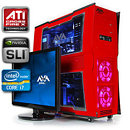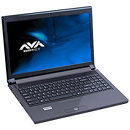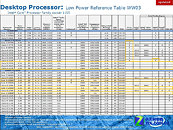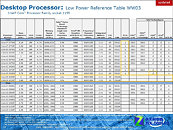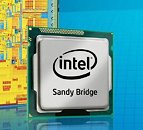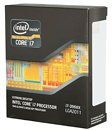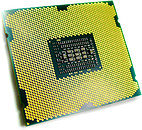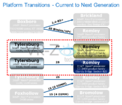
Intel Launches 13th Gen Core vPro Processors
Intel today expanded its 13th Gen Core "Raptor Lake" client processor family into the commercial segment. Devices in this segment are bought in bulk by large businesses and enterprises; the processors powering them have certain in-built device security and remote management features that enforce company policy regardless of where the employees take the devices. Intel has been pioneering hardware-level remote-management and device security features for close to two decades now, with its vPro feature-set (originally launched as Centrino vPro in the 2000s. The new 13th Gen Core vPro lineup covers popular processor models across various device form-factor classes, spanning ultraportables (15 W or below), thin-and-light commercial notebooks (28 W to 35 W segment); mainstream commercial notebooks (45 W to 55 W); and commercial desktops (65 W).
The 13th Gen vPro series have a lot in common with the 12th Gen Core vPro series, At a hardware-level, these are processors based on the same "Raptor Lake" silicon as the mainstream-client 13th Gen Core processors, but with the enhanced vPro Management Engine that interacts with a compatible operating system to offer endpoint remote manageability for administrators. The desktop versions of these chips have identical SKU differentiation to 65 W 13th Gen Core processors already launched, but with either vPro or vPro Essentials feature-sets. Something similar applies to the 15 W U-segment, 28 W P-segment, and 35-45 W H-segment Core vPro processors. Along with these processors, Intel is debuting Q700-series chipsets specific to the form-factor. For U- and P-segment mobile processor SKUs, the core-logic is part of the processor package; while the H-segment and S-segment (desktop) processors come with discrete chipsets. With the 13th Gen, Intel is also standardizing a new WiFi 6E (Gig+) WLAN chipset with vPro features.
The 13th Gen vPro series have a lot in common with the 12th Gen Core vPro series, At a hardware-level, these are processors based on the same "Raptor Lake" silicon as the mainstream-client 13th Gen Core processors, but with the enhanced vPro Management Engine that interacts with a compatible operating system to offer endpoint remote manageability for administrators. The desktop versions of these chips have identical SKU differentiation to 65 W 13th Gen Core processors already launched, but with either vPro or vPro Essentials feature-sets. Something similar applies to the 15 W U-segment, 28 W P-segment, and 35-45 W H-segment Core vPro processors. Along with these processors, Intel is debuting Q700-series chipsets specific to the form-factor. For U- and P-segment mobile processor SKUs, the core-logic is part of the processor package; while the H-segment and S-segment (desktop) processors come with discrete chipsets. With the 13th Gen, Intel is also standardizing a new WiFi 6E (Gig+) WLAN chipset with vPro features.









